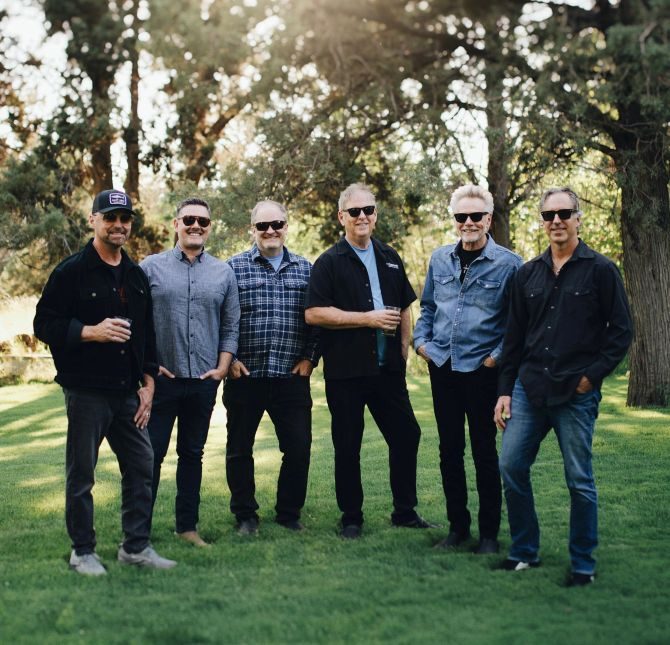‘80s-style fashion reaches critical mass
Published 12:00 am Tuesday, March 27, 2018

- This look is from Marc Jacobs’ fall 2018 collection. Having introduced his brand smack in the middle of the ’80s, he has a right to nostalgia and his own memory room. (Landon Nordeman/The New York Times)
I have spent the last month trapped in a wrinkle in time. Not the film, mind you, though that was quite the fashion moment, and not the book. Rather, sitting by the runways, hour after hour, day after day, city after city between Feb. 7 and March 7, I could feel myself slipping further down a wormhole into the past. One moment, it was 2018; the next, it was 1981 (or ’85, or ’88).
But here’s the thing: I have been there before. I’m not sure I want to go back.
There’s a lot of talk these days about the end of trends, or at least trends as we knew them, when designers seemingly dictated en masse that skirts would be short, or long; pants wide or slim, the message filtered down insistently through magazines and department stores. Now fashion has been fractured into a zillion subgroups and subcultures through social media and direct-to-consumer everything, so that what has resulted is a smorgasbord of options.
Yet every season a few major, yes, trends appear and demand a reckoning, not least because thanks to their ubiquity, they will likely dominate the visual landscape come August. It doesn’t mean you have to buy into them, but it does mean you have to consider them — and more interestingly, the reasons they exist, and how that makes you feel.
This time round it was the 1980s, a decade that has been making a comeback of sorts around the aesthetic edges for the last few years. But while in previous seasons, its re-emergence was tempered by assorted other decades and influences, it has now reached critical mass.
Shoulders were the body part of choice, most often inflated to mega proportions (see Marc Jacobs, which even included a pouf-skirted party dress). There were a lot of power furs and leathers, at Givenchy, Tom Ford and Alberta Ferretti. Spangles and shine, at Saint Laurent and Balmain — which, along with Gucci and Versace, also played logo-a-go-go. It was as if everyone had taken a wrong turn on the Warner Bros. lot and ended up in the costume department from “Bonfire of the Vanities.”
And it was all set to an ’80s soundtrack: Terence Trent D’Arby and Sade at Ferragamo, “Tainted Love” and “Take On Me” at Balmain, Carly Simon’s “Let the River Run” from “Working Girl” at Thom Browne.
Julie de Libran, the creative director of Sonia Rykiel, even reconstituted Bananarama (live!) for her label’s 60th-anniversary show. With the requisite stonewashed denim (Miu Miu), lots of neon (Prada, Versace) and stirrup pants (Tom Ford) to match.
I guess we should have expected it, given the current conjunction of political and cultural events, all of which seem to steer a designer’s thoughts naturally to the go-go decade.
Given, for example, the #MeToo movement and the global explosion of women demanding parity and recognition in the workplace and an end to sexual harassment, a phenomenon that apparently leads inexorably to the memory of the power suit, in all its big-buttoned, shoulder-padded glory — the most obvious recent reference point for armor to be donned on the corporate battlefield.
Given the ascension of Donald Trump, with his suit and big red tie uniform (with its nod to Gordon Gekko and Ronald Reagan) and his unabashed love of gilding not just the lily, but every surface under the sun, the better to convey aesthetic bombast: big hair, big gems, big belts. Also, for that matter, his past connection to Blaine Trump, his former sister-in-law and the erstwhile socialite who put the pouf in pouf skirt.
And given the wellness movement, and the rise of athleisure and yoga pants, which has as its predecessor the aerobics years, with their love of bright-colored leotards, stretch pants and a bodysuit.
Not to mention the current exhumation of assorted 1980s television and film favorites, including “Dynasty,” “Heathers,” “Baywatch” and “Blade Runner,” and Steven Spielberg’s new “Ready Player One,” which is pretty much an ode to the 1980s. And the coming royal wedding, with its connections to that other famous royal wedding, in 1981, which featured perhaps the biggest royal wedding shoulders of all.
But speaking as someone who is old enough to have actually lived through it — I was in high school and college in the 1980s; my mother was one of the ceiling-cracking women in those big-shouldered suits — I confess to having mixed feelings about the resurgence. Admittedly, it could be because I have mixed feelings about many of my adolescent choices, and the clothes I wore simply suffer by association, but I think it goes beyond that. I want to believe we are moving forward, and this feels like moving back.
Part of the aesthetic of the ’80s, after all, derived from the clothes of the ’40s, another time when women moved forward into the workplace (just as the 1960s echoed the 1920s, with the sense of sexual liberation and youth and freedom expressed through clothes). But it was a conceptual connection; a genetic link more than a clone. By contrast, the ’80s of 2018 is strikingly literal — seemingly made to be read through a small screen.
Of course, it’s possible this is simply part of the struggle to reach a new stage; the fashion equivalent of two steps forward, one step back. Nicolas Ghesquière got at that backstage at Louis Vuitton when he talked about fashion as time travel. To a certain extent, he said, the job is all about navigating between the past and what you expect for the future, and the clash of the two. The place they conflict is the present.








